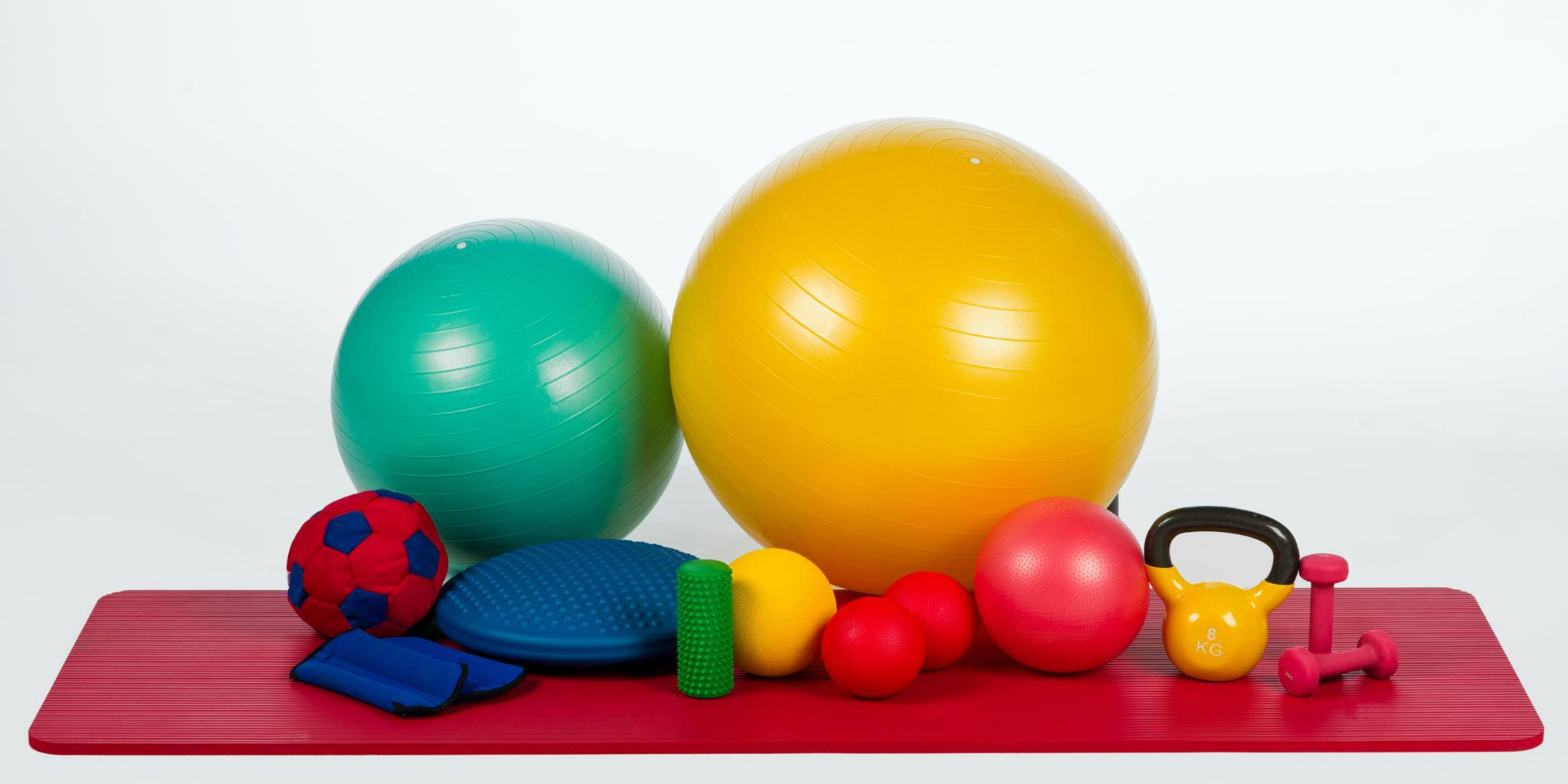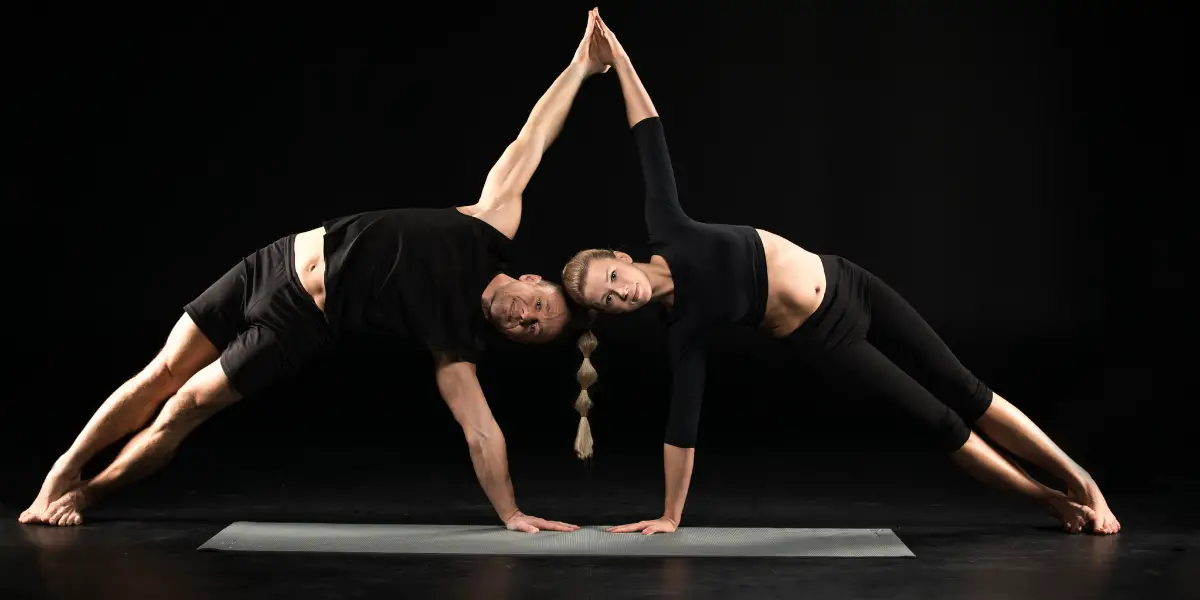Navigating the fitness world can sometimes feel like deciphering a foreign language, especially when confronted with many available equipment choices. Among the most versatile and popular tools is the Pilates ball, a seemingly simple accessory that offers a range of exercises tailored to various needs.
Consider your height and intended use to find the perfect fit for your Pilates ball workout. Typically, those under 5’6″ should opt for a 55cm ball, 5’7″-5’11” for a 65cm ball, and 6′ and taller for a 75cm ball. Ensure it allows your knees to be at a right angle when seated on top for optimal alignment and effectiveness.
But before diving into the deep end, it’s essential to understand that not all balls are created equal. Identifying the right size for your workout is crucial, and as with many things in life, it’s all about finding that perfect fit.
Understanding the Importance of Ball Size in Pilates Workouts
When embarking on a Pilates journey, the right equipment is crucial for achieving desired results and ensuring safety. The ball holds a special place among the various Pilates equipment due to its versatility and efficacy in targeting different muscle groups. However, choosing the appropriate ball size isn’t just a matter of personal comfort—it’s foundational to the exercise’s mechanics and benefits.
A Pilates ball’s size directly influences the body’s angle and positioning during exercises. An incorrectly sized ball can lead to poor posture, reducing the workout’s effectiveness and potentially leading to injuries. Proper alignment, especially in the spine and pelvis, is pivotal in Pilates, ensuring you engage the right muscles and move efficiently.
Using the correct ball size also plays a role in the intensity of the workout. A ball that’s too big or small can limit your range of motion or provide inadequate support. This can either increase the challenge unnecessarily or diminish the exercise’s effectiveness, making it harder to achieve desired results.
The right-sized ball provides the necessary support and stability, especially during exercises that require balance. It ensures that the core is actively engaged, maximizing the benefits of the Pilates workout. Moreover, the ball acts as a tactile guide, giving instant feedback on alignment and positioning aiding in self-correction during exercises.
In the realm of Pilates, where precision, control, and alignment are paramount, the significance of choosing the correct ball size cannot be overstated. It lays the groundwork for an effective workout, ensuring that each movement is performed with the right intent and maximum benefit.
Height and Proportions: Key Determinants for Your Ball Choice
When selecting the right Pilates ball, height is a predominant factor, but body proportions also play a pivotal role. A proper fit ensures optimal muscle engagement, alignment, and safety during exercises. Understanding the interplay of height and body proportions in determining the right ball size will enhance your workout’s effectiveness and elevate your Pilates experience.
1. The Role of Height
- Under 5’6″ – Typically, individuals under 5’6″ find a 55cm ball the most suitable. The hips and knees should form a right angle when seated atop the ball, ensuring a natural posture.
- Between 5’7″ and 5’11” – For those falling in this height range, a 65cm ball is often recommended. It offers the right elevation to maintain proper alignment during exercises.
- 6′ and Above – Taller individuals, usually those 6′ and above, benefit from a 75cm ball, ensuring the legs and spine are not overly compressed or extended.
2. Beyond Height: The Importance of Proportions
- While height offers a good starting point, individual body proportions can influence ball size choice. People with longer legs compared to their torso might need a larger ball than their height suggests, and vice versa.
- Torso Length – A longer torso may require a larger ball to ensure the spine remains neutral, especially during exercises focusing on core stability.
- Leg Length – Conversely, those with longer legs might need to consider a larger ball to ensure their feet rest comfortably on the ground while seated, promoting balance and stability.
3. Adjustments and Considerations
- Personal comfort and the specific exercises you plan to do should also influence your choice. Some exercises might be more comfortable or challenging on a slightly larger or smaller ball. Remember, it’s essential to feel stable and secure during your routine.
While height is an excellent initial guide, proportions are equally important in selecting the perfect Pilates ball. Taking the time to assess both ensures a tailored, effective, and safe workout experience.
Safety and Comfort: Ensuring Proper Alignment and Technique
Safety and comfort are paramount in any fitness regimen, and Pilates is no exception. When using a Pilates ball, these aspects are significantly influenced by the ball’s size about the practitioner. Ensuring proper alignment and mastering correct techniques prevent injuries and amplify each exercise’s benefits. Here’s a deep dive into how the right ball size can be a game-changer.
The Science of Alignment
- Spinal Integrity – The curvature of the spine is delicate and should be maintained, especially during exercise. A ball that’s too large or small can cause arching or rounding of the back, leading to undue stress on the vertebrae.
- Joint Health – Proper alignment ensures that joints, especially the hips and knees, are positioned correctly, minimizing the risk of strains or injuries.
Technique and the Ball Size
- Core Engagement – A suitably sized ball facilitates optimal core activation. It allows the pelvic floor, obliques, and deeper abdominal muscles to work harmoniously during exercises, yielding better results.
- Range of Motion – The right ball size enables a full range of motion, ensuring that exercises are done comprehensively, and muscles are stretched and contracted effectively.
Comfort as a Safety Indicator
It’s essential to recognize that discomfort often signals misalignment or incorrect technique. If exercises feel unusually straining or painful, it might indicate that the ball size isn’t appropriate or the technique needs refinement.
- Pressure Points – An incorrect ball size might lead to unnecessary pressure on specific body parts, such as the wrists or lower back. These pressure points can be precursors to injuries.
- Stability Checks – If you wobble excessively or cannot maintain a position on the ball, it might be too large or too small for your needs, compromising safety.
In the nuanced world of Pilates, the difference between a productive workout and potential injury often lies in the details—chiefly alignment and technique. By prioritizing safety and comfort by selecting the right ball size, practitioners can confidently harness the full benefits of their Pilates journey.
Diversifying Your Routine: Exercises Tailored to Different Ball Sizes
The versatility of the Pilates ball is one of its most alluring features, offering a vast array of exercises adaptable to various sizes. While a correctly sized ball is crucial for proper alignment and safety, experimenting with different ball sizes can add diversity to your routine, challenging your body in new ways. Let’s explore some exercises tailored to different ball dimensions and the unique benefits they bring.
Small Balls: Precision and Control
- Deep Core Activation – A smaller ball, like a 45cm variant or a mini Pilates ball, placed between the thighs during exercises like the bridge can intensify core engagement and inner thigh activation.
- Balance Challenges – The small ball is perfect for exercises that require placing it under the hand or foot, adding an element of instability that hones balance and coordination.
Medium Balls: Versatility and Transition
- Dynamic Squats – With a 55cm or 65cm ball placed against a wall, squats can provide back support and ensure proper form while working the leg muscles.
- Back Extensions – Lying face down on the ball allows for controlled back extension exercises, targeting the erector spinae and improving spinal mobility.
Large Balls: Broad Movements and Stretching
- Planks and Push-Ups – The 75cm ball provides an elevated surface for plank variations and push-ups, intensifying core engagement and upper body strength training.
- Deep Stretches – Larger balls are great for exercises that focus on elongating and stretching, like the child’s pose variation, where you drape yourself over the ball.
Incorporating Various Sizes in One Session
While having a primary ball size tailored to your physique is beneficial, incorporating multiple sizes can provide a comprehensive workout. For instance, starting with a small ball for targeted exercises, transitioning to a medium-sized ball for core workouts, and then using a large ball for stretches can provide a well-rounded session.
Diversity in a workout routine is often the key to sustained interest, continued challenge, and progressive results. By understanding the unique strengths of different ball sizes and tailoring exercises to each, you can breathe fresh life into your Pilates regimen and ensure continuous growth.
Sources:
https://www.womenshealthmag.com/fitness/a29417665/what-size-exercise-ball/
https://www.verywellfit.com/tip-how-to-size-your-exercise-ball-2704366




